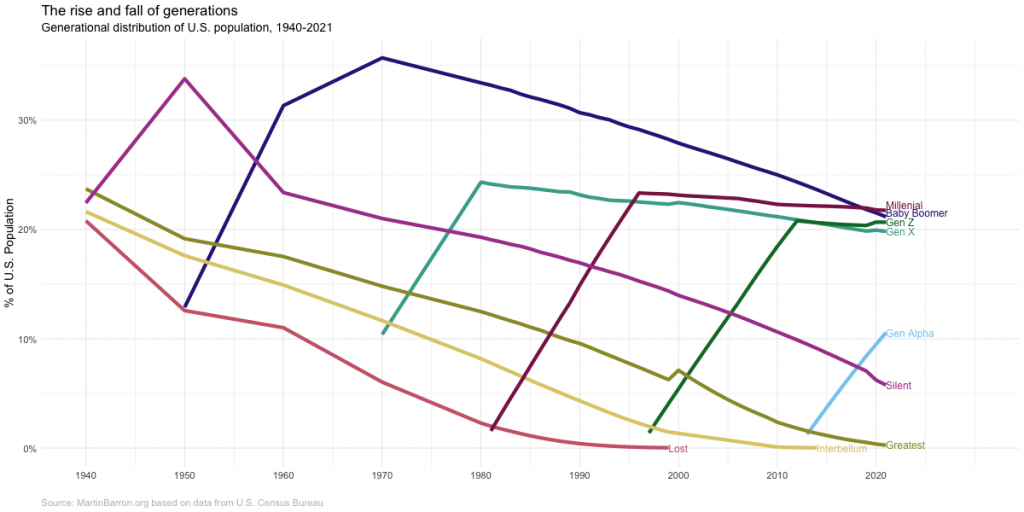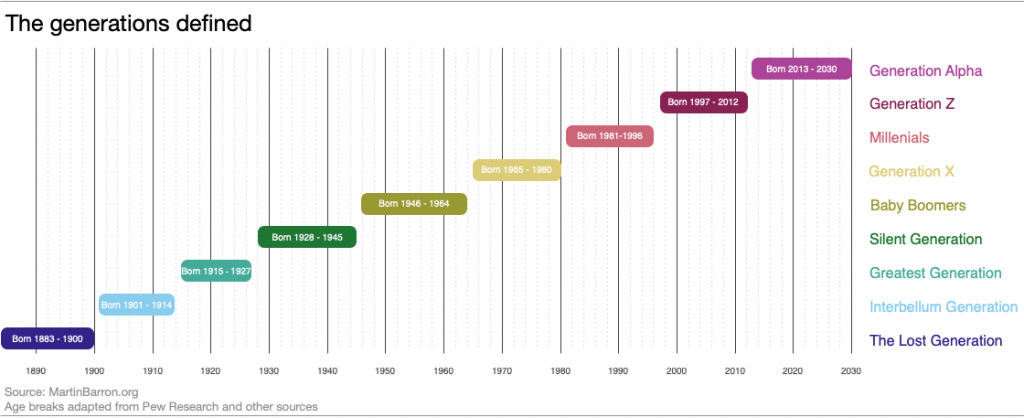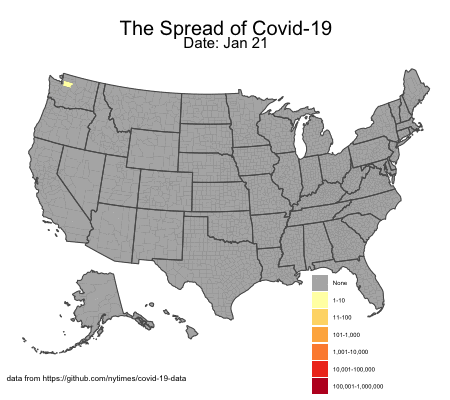I’m going to see how far I can get in this years Advent of Code. My solutions are here.
Tag: data science (Page 2 of 3)
My previous post showing the definitions of different generations was in service of creating the chart below. This chart illustrates the “rise and fall” of generations across their lifecycle. As a new generation is born, it’s share of the population increases. Once a generations births have ended, there is a very long tail as people in that generation slowly die and new generations are born.
The data from the chart below comes from the U.S. Census bureau. I was able to use yearly population estimates from 1980 onward, but prior to 1980 the data comes from decennial Census PUMs data (hence why, for example, Gen X looks it starts in 1970–instead of 1965–and why the baby boomers have such an odd slope between 1960 and 1970). The Census Bureau does not publish birth year, so I estimated birth year (and thus generation) from age and year of estimate. There will thus ‘slop’ in my estimates but they should be close for my purpose here.

Generations is a very… imprecise… sociological concept. People just sorta look at a rough cohort of ages and say “yeah, you all are a generation.” Start and end points (as well as labels) just sorta coalesce out of the ether.
Nevertheless, they have their use and certainly are cemented in the popular imagination. I’ve been doing some reading on generations and really appreciated this diagram and article by Pew Research. But I wish it went a little earlier and a little later. So I made my owner version, *heavily* influenced by the Pew version.

Last week I was curious when I would cross the Brimley/Cocoon line (the age Wilford Brimley was when Cocoon premiered). The answer is: way too soon.
But it inspired me to create a little R package so that anyone could figure out when they would cross the line. I put the package up on Github and you can find it here.
And since not everyone is an R programmer, I threw it into a little website that you can use here.
This was heavily inspired by @brimleyline on twitter. After the fact I did a search and discovered another site had already made a simple tool for this. But I like mine better 🙂 .
I’ve been playing with a R package called gganimate and created a simple animation showing the spread of Covid-19 through April 19th.
